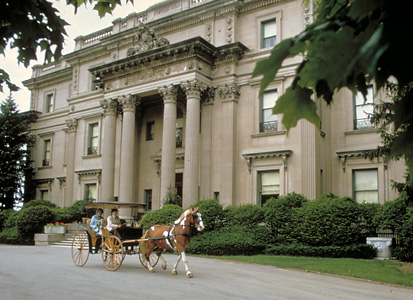McKim, Charles Follen (1847-1909), was an American architect. He helped make popular again the building styles of classical Greece and Rome. These styles dominated American architecture from 1880 to 1920.
In 1879, McKim and the American architects William Rutherford Mead and Stanford White formed McKim, Mead & White, one of the leading American architectural firms of their day. The firm designed more than 1,000 commercial, public, and residential buildings. The most significant designs included the Boston Public Library (1887-1895); the Frederick W. Vanderbilt mansion (1899) in Hyde Park, New York; and the Pierpont Morgan Library (1902-1907) and the Pennsylvania Railroad Station (1902-1910), both in New York City.
McKim was born on Aug. 24, 1847, in Isabella Furnace, Pennsylvania. He studied at the School of Fine Arts in Paris from 1867 to 1870. From 1870 to 1876, he worked on and off for the famous American architect Henry Hobson Richardson. In 1901, the U.S. Senate appointed McKim to study the public grounds of Washington, D.C., along with architect Daniel Burnham, the sculptor Augustus Saint-Gaudens, and the landscape architect Frederick Law Olmsted, Jr. The classical designs of monuments and buildings in the city generally follow McKim’s guidelines. In 1902, President Theodore Roosevelt appointed McKim to remodel the White House.
McKim played an important role in raising the standard of professional architecture in America. In 1894, he founded the American School of Architecture in Rome, which became the American Academy in 1896. He helped transform the American Institute of Architects (AIA) from a small New York City club into a powerful national organization. McKim died on Sept. 14, 1909.

